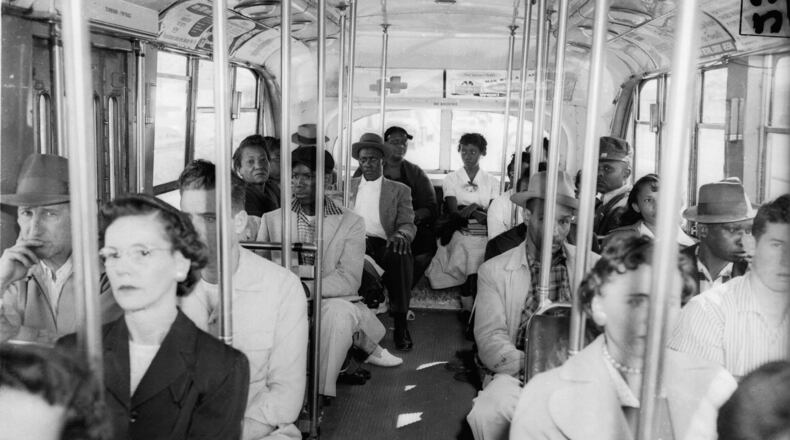Virginia, if not the entire nation, is now in the throes of consternation over recently discovered incidents of ‘inappropriate blackface.‘
First, a medical school yearbook photograph of Ralph Northam, the governor of Virginia, appeared on the same page as a photo of a person dressed as a Klansman and person in blackface. The governor initially admitted to being the person in blackface but subsequently declared, with conviction, that he is neither person. Neither person has come forward or been otherwise conclusively identified.
A few days later, Mark Herring, the Attorney General for the Commonwealth of Virginia, confessed to having dressed in blackface at a party during his 1980s college years. No photographs emerged but he too offered a preemptive confession.
Democrats are apoplectic. After all, Northam, the governor of a crucial swing state, is an important up-and-comer for the party. Nevertheless, former Virginia governors Doug Wilder and Terry McAuliffe, the Virginia Legislative Black Caucus, and the NAACP, have called for his resignation. Democratic Attorney General Herring, third in the line of succession, is also losing support because of his collegiate blackface transgression. (The Lieutenant Governor has his own distinct problems which may also place his continued tenure in jeopardy). But it is not just Democrats: Virginia’s Republican Senate majority leader, Thomas K. Norment Jr., has owned up to his role as editor of the 1968 Virginia Military Institute yearbook, reportedly replete with blackface images and racist invectives.
What a mess. What to do?
The Virginia dilemma is symptomatic of a larger problem: too many Americans still refuse to come to terms with America’s racist past and with America’s current tolerance of racist beliefs, biased institutions and seemingly immutable segregation.
One responsive cliché accompanying blackface revelations is that “by the 1980’s everyone knew better than to wear blackface.” That assessment may be correct but, to date, the practice of wearing blackface hasn’t ended. The cultural perceptions that blackface is “not a problem” or “no big deal,” still persist.
Witness last year’s genuinely (?) perplexed Megyn Kelly. Witness the 1993 Ted Danson Friar’s Club performance. Witness the 2005 “Katrina victim” blackface performance of the (newly resigned) Florida Secretary of State. And witness the foul collegiate reappearances of blackface at University of Southern Mississippi (2011), Kansas State University (2016), California Polytechnic University (2018), and the University of Oklahoma (January, 2019). If we know better, we ought to do better. But it hasn’t worked out that way.
Each time the blackface issue rears its ugly head, we are soberly reminded of its sordid history. Blackface performance arose as part of the American minstrel show “tradition.” White performers used burnt cork or sometimes shoe polish, to darken their faces. They then painted their lips (either white or red or both) creating grotesque imitations of black people. They adopted a ‘dialect’ of nonsensical English, and the personality of a servile, witless, lazy, slow-moving, and immoral, fictional black person. What emerged was the dehumanizing portrait of an inferior, ignorant, and unworthy emancipated “Negro”.
This notorious caricature infamously made its way onto the big screen in D.W. Griffith’s 1915 “classic” film, Birth of a Nation (aka The Clansman), which depicted, among other depravities, a sex-crazed white actor in blackface chasing down a helpless young white girl and black-faced white actors drinking to drunkenness while gluttonously eating chicken and watermelon in the chambers of the United States Congress. The film’s heroic coup de grace is delivered when the Ku Klux Klan rides in to rescue the damsel in distress, and the nation. A remarkable but devastating (to the American psyche) homage to white supremacy.
To make matters worse, the film was endorsed by President Woodrow Wilson (a Virginian) who reportedly said ”It is like writing history with lightning, and my only regret is that it is all so terribly true.” In fact, the film capsulized the racist viewpoint of everything that the enemies of black freedom urged was wrong with Reconstruction. Tragically, the film was wildly successful in promoting the KKK and its racist ideology.
Yes Virginia, there is a problem. Too many Americans continue to maintain their right to dress up and play Negro, regardless of the evil it perpetuates. Yes Virginia, reconciliation requires truth, but it also requires a desire to reconcile.
Nevertheless, with each blackface incident, and its companion ‘teachable moments,’ fewer people can credibly claim that they “didn’t know it was offensive,” that they “didn’t intend to hurt anyone,” or, that they deserve a free pass.
James H. Swain is a retired attorney and writer who lives in metro Atlanta.
About the Author
Keep Reading
The Latest
Featured


